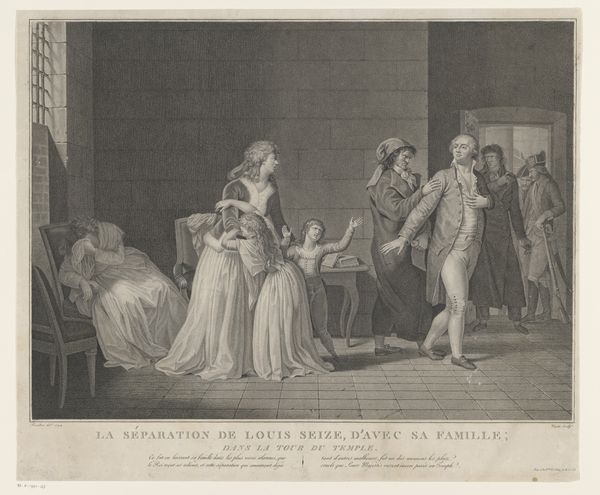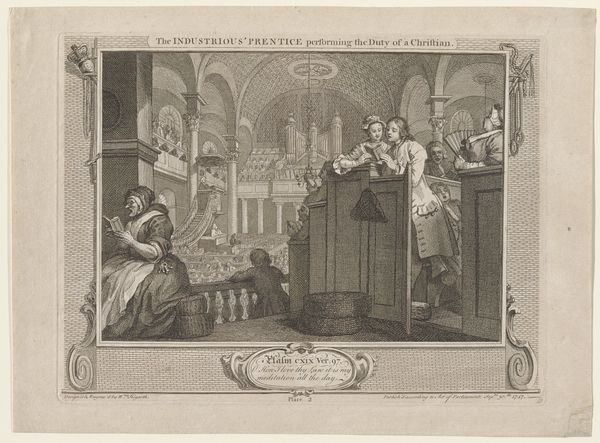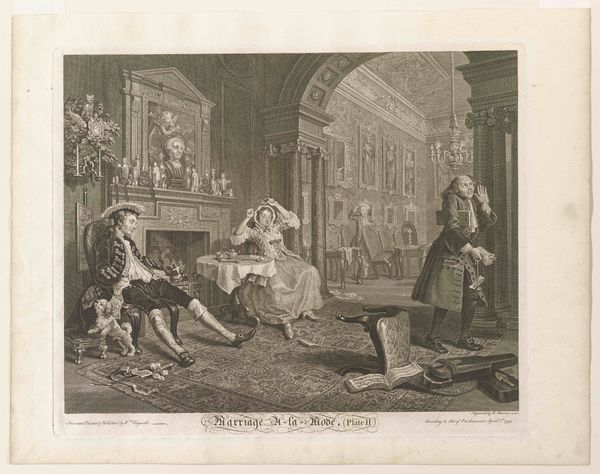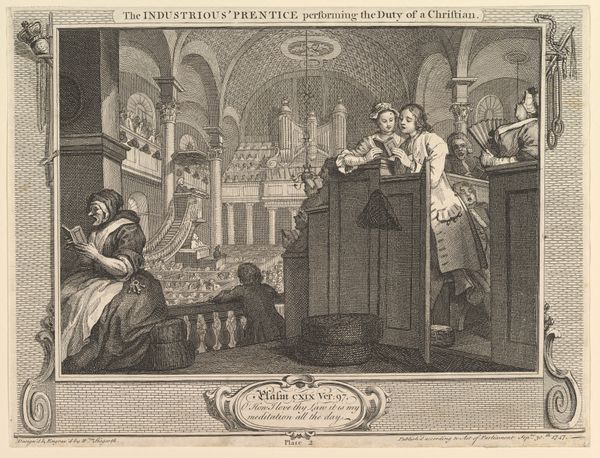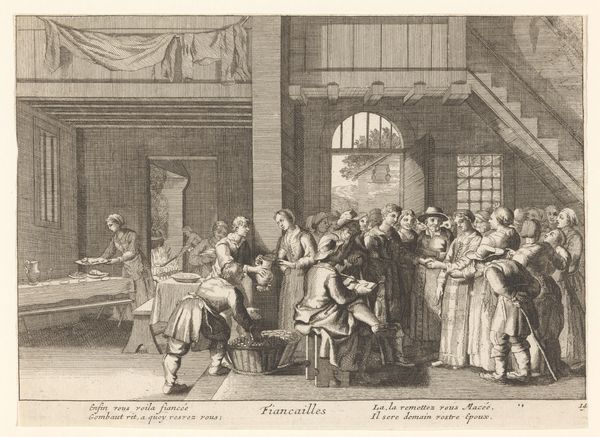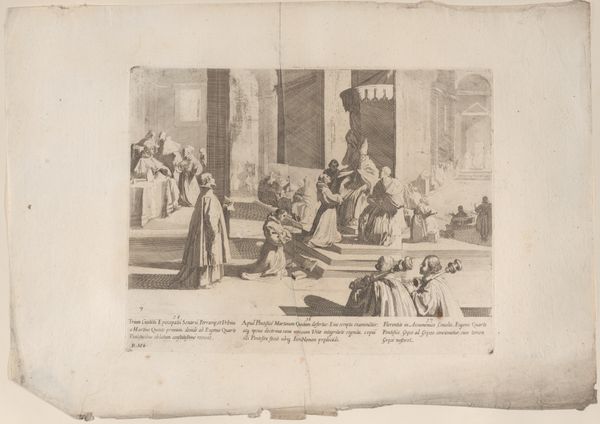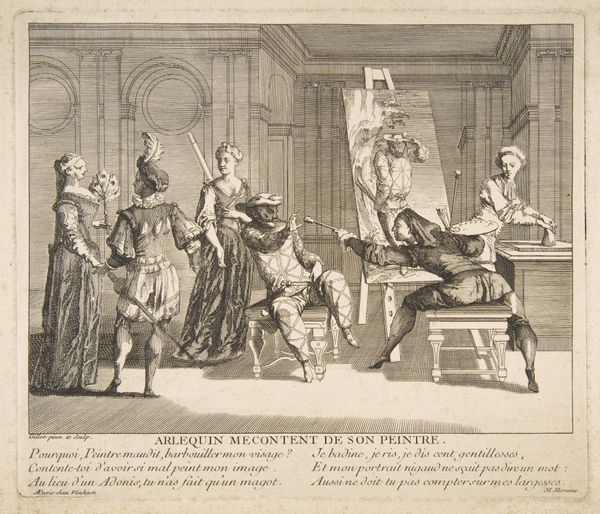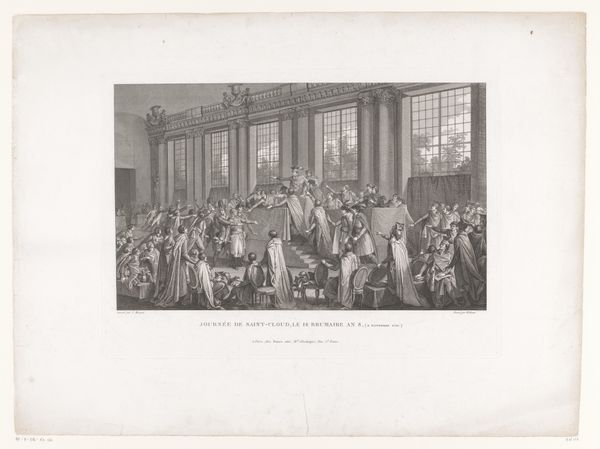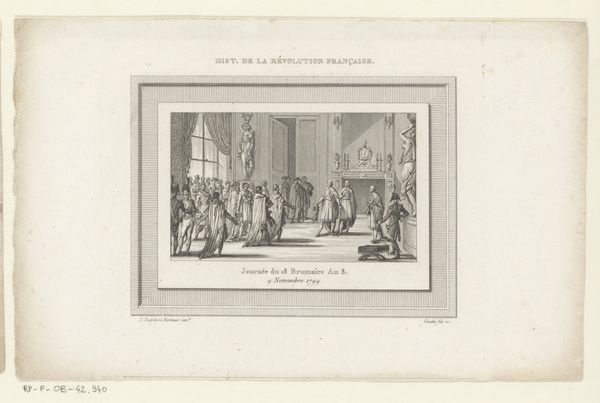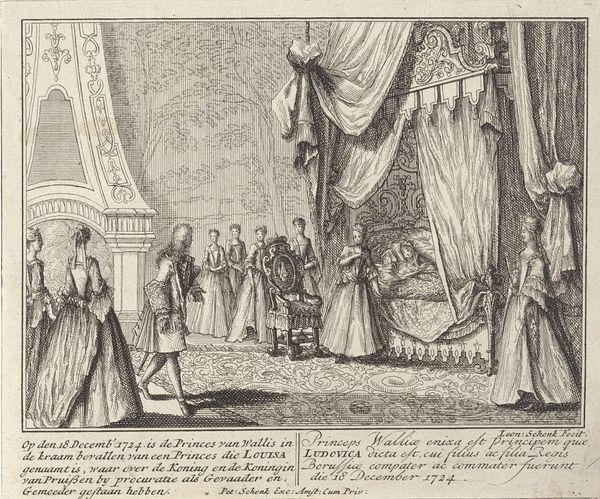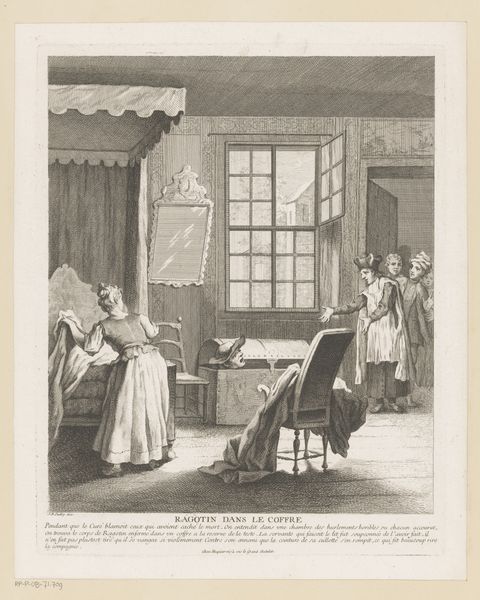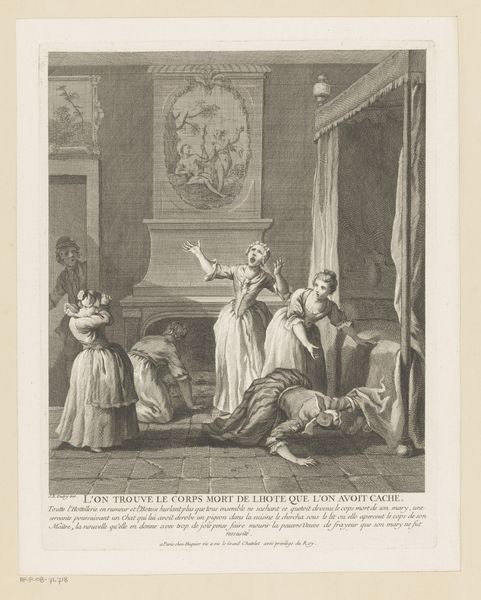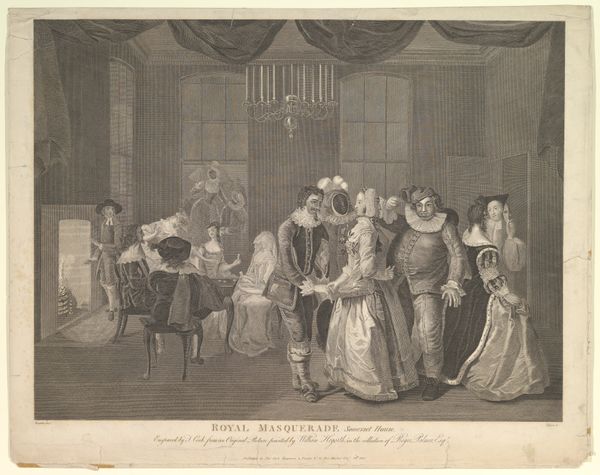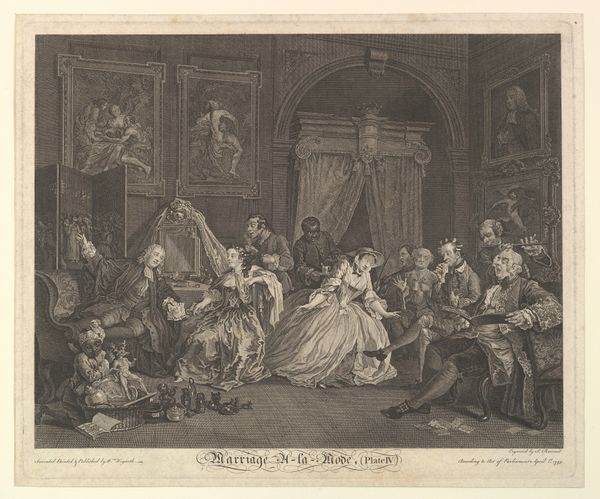
Pope Pius VI taking leave of the Augustinian monks in Siena 1801
0:00
0:00
drawing, print
#
drawing
# print
#
19th century
#
genre-painting
#
history-painting
Dimensions: Plate: 14 3/4 × 18 15/16 in. (37.5 × 48.1 cm) Sheet: 15 3/8 × 19 11/16 in. (39 × 50 cm)
Copyright: Public Domain
Curator: This is “Pope Pius VI taking leave of the Augustinian monks in Siena,” a print made in 1801 by Girolamo Carattoni. It's currently held at the Metropolitan Museum of Art. What are your initial thoughts? Editor: Austere, definitely. The monochrome palette and linear precision create a somber, almost mournful mood. You can almost feel the weight of the moment depicted. Curator: Absolutely. Let’s delve a little deeper. This image documents a significant moment: Pope Pius VI’s departure. Considering the tumultuous late 18th and early 19th centuries, with the rise of revolutionary fervor across Europe, how might this scene of departure resonate within a broader sociopolitical context? Editor: Well, consider the materials: it’s a print, widely accessible, capable of disseminating information and perhaps… shaping opinion. I think of it as visual propaganda, if you will, capturing not just the event, but perhaps crafting a certain narrative around it. Look at the fine lines, almost etched with care. This suggests a controlled means of reproduction, with layers of labor at play. Curator: Indeed. And, thinking through the lens of identity, how might this image reflect evolving notions of papal authority and the role of the Church amidst challenges to its power? Note how the monks kneel. Editor: It is certainly a staged drama. The bowing figures emphasize a traditional hierarchical power dynamic but might, just possibly, provoke questions for some viewers—questions about subservience, power structures, and even the economic support underpinning it all. Where does their wealth come from, materially? Curator: That tension between established power and burgeoning dissent is palpable. This isn't simply a historical snapshot; it's a window into a period of intense social and political upheaval. Editor: Precisely! I notice also that the means of transport—a carriage—sits centrally but just beyond the threshold of the monastery’s walls, almost fading in shadow: its material importance somehow deemphasized in a highly effective way. Curator: The deliberate choice to portray this event in such a specific way—Pope Pius’ exit, not his imprisonment or other circumstances—prompts critical inquiry. How might it be read within discourses of resilience, resistance, or even complicity during times of political unrest? Editor: Analyzing Carattoni’s methods of printmaking sheds further light on production: the techniques would allow the spread of this view to be widened but at what cost to its integrity of messaging. Curator: I agree; so much complexity resides beneath the surface. It really gives us pause to reconsider inherited narratives. Editor: It all contributes, layer upon layer, to a richly woven picture, much like the layered approach required to manufacture this printed document!
Comments
No comments
Be the first to comment and join the conversation on the ultimate creative platform.
